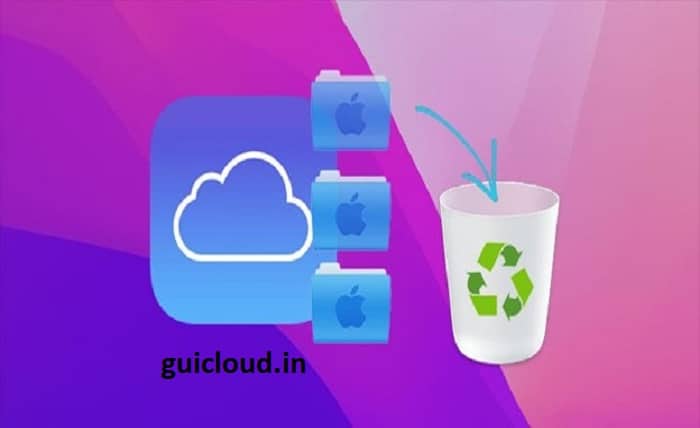How to Delete iCloud Backup: A Comprehensive Guide

1. iCloud Backup
Before diving into the process of deleting iCloud backup, it’s essential to understand what iCloud backup is and why it’s useful. iCloud backup automatically saves your device’s data, including app data, settings, and personal files, to Apple’s cloud servers. This ensures that you can restore your data in case you lose your device or need to set up a new one. Knowing the importance of iCloud backup helps in making informed decisions about managing and deleting backups.
2. Reasons to Delete iCloud Backup
There are several reasons you might want to delete iCloud backup. These include freeing up iCloud storage space, especially if you are using the free 5GB plan, removing outdated or redundant backups, or preparing your device for sale or transfer. Deleting iCloud backup can also be part of routine maintenance to keep your storage organized and efficient.
3. Preparing to Delete iCloud Backup
Before you delete iCloud backup, it’s crucial to ensure that you won’t need the data stored in it. Make sure you have recent backups of your important data either on another cloud service or a local device. Double-check the content of the backups and confirm that deleting them won’t lead to data loss.
4. How to Delete iCloud Backup on iPhone or iPad
Deleting iCloud backup directly from your iPhone or iPad is straightforward. Here’s how to do it:
- Open the Settings app on your device.
- Tap on your name at the top of the screen to access your Apple ID settings.
- Select iCloud.
- Tap on Manage Storage.
- Choose Backups.
- Select the device whose backup you want to delete.
- Tap Delete Backup.
- Confirm your decision by tapping Turn Off & Delete.
This will delete the iCloud backup for the selected device and free up the associated storage space.
5. How to Delete iCloud Backup on a Mac
If you prefer to delete iCloud backup using a Mac, follow these steps:
- Click the Apple menu and select System Preferences.
- Click on Apple ID.
- Choose iCloud in the sidebar.
- Click on Manage.
- Select Backups.
- Choose the backup you want to delete.
- Click Delete.
- Confirm your decision.
Deleting iCloud backup from a Mac offers the same benefits and is just as effective as doing it from an iPhone or iPad.
6. How to Delete iCloud Backup on a Windows PC
For Windows PC users, deleting iCloud backup can be done through the iCloud for Windows app:
- Open the iCloud for Windows app.
- Click on Storage.
- Select Backups.
- Choose the backup you want to delete.
- Click Delete.
- Confirm your decision.
Using iCloud for Windows to delete iCloud backup ensures you can manage your storage even if you don’t have immediate access to an Apple device.
7. Managing iCloud Storage After Deleting Backups
Once you’ve deleted unnecessary iCloud backups, it’s wise to manage your remaining iCloud storage. Consider upgrading your iCloud storage plan if needed, or use alternative cloud services to store large files and photos. Regularly reviewing your iCloud storage usage helps maintain optimal performance and efficiency.
8. Troubleshooting Common Issues
Sometimes, you might encounter issues when trying to delete iCloud backup. Common problems include backups not appearing in the list or the delete option being greyed out. Restarting your device, ensuring a stable internet connection, and updating your iOS or macOS can resolve many of these issues. If problems persist, contacting Apple Support is recommended.
9. The Impact of Deleting iCloud Backup
Deleting iCloud backup frees up storage space and can improve the performance of your iCloud service. However, it also means losing the ability to restore your device from that specific backup. Carefully consider the impact and ensure you have alternative backups before proceeding.
10. Best Practices for iCloud Backup Management
To avoid frequently needing to delete iCloud backups, adopt best practices for managing your iCloud storage. Regularly clean up unnecessary files, use optimized storage settings for photos and apps, and schedule regular backups to a computer or external drive. These practices ensure you always have enough space and can quickly restore your data when needed.
Conclusion
Deleting iCloud backup is a practical step to manage your iCloud storage effectively. Whether you need to free up space, remove outdated backups, or prepare for a new device, understanding how to delete iCloud backup and the implications of doing so is crucial. By following the steps outlined in this guide and adopting best practices for storage management, you can ensure a smooth and efficient experience with your Apple devices.
FAQ
- Why should I delete the iCloud backup?
- Deleting iCloud backup can free up storage space, remove redundant data, and help manage your iCloud storage more effectively.
- How do I delete iCloud backup on my iPhone?
- Go to Settings > [Your Name] > iCloud > Manage Storage > Backups, select the backup to delete, and confirm.
- Can I recover a deleted iCloud backup?
- Once an iCloud backup is deleted, it cannot be recovered. Ensure you have alternative backups before deleting them.
- What happens if I delete my iCloud backup?
- Deleting an iCloud backup removes that specific backup from iCloud, freeing up storage space but also losing the ability to restore from that backup.
- How can I manage iCloud storage after deleting backups?
- Regularly review and clean up unnecessary files, use optimized storage settings, and consider upgrading your iCloud storage plan to maintain efficiency.




